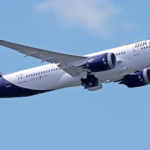Air Cargo Demand and Rates Remain Strong in August, Up +10% and +12% YoY
Worldwide air cargo demand and pricing have stayed strong throughout August, with tonnages up +10%, year on year (YoY), and rates +12% above last year’s levels, according to the latest figures and analysis from WorldACD Market Data.
It covers each of the last 5 weeks up to Sunday September 1, 2024.
August’s YoY comparison figures are similar to those in July 2024, when chargeable weight was up +13%, YoY, and rates showed a +10% YoY improvement. Compared with July, total flown chargeable weight dipped slightly in August, by -2%, but average yields edged up by a further +1%, to US $2.49 per kilo – based on a full-market average of spot rates and contract rates.
Prices from Asia Pacific origins also rose by a further +1% in August, compared with July, to $3.26 per kilo, taking them +22% above their equivalent level last year. And rates from Middle East & South Asia (MESA) origins rose by another +3% to average $2.81 per kilo, taking them +58% higher than last August’s levels. Both those key regions saw tonnages slip slightly in August, compared with July, by -3% and -2%, respectively, but they remain +13% and +10% higher than last August, based on the more than 2 million monthly transactions covered by WorldACD’s data.
Average contract rates and spot rates both rose slightly in week 35 (26 August to 1 September), to $2.41 and $2.71 per kilo, taking overall average rates to $2.51. That’s +13% above last year and an increase of +46% compared with the last pre-Covid equivalent period, August 2019.
Meanwhile, tonnages in week 35 slipped by -1%, week on week (WoW), due to week-on-week (WoW) decreases from North America (-4%), Europe (-2%), MESA (-1%) and Central & South America (CSA, -1%) origins. The drop in volumes ex-North America is related to the Labor Day holiday weekend in the US and Canada, impacting capacity by -5% WoW in week 35, tonnages by -4% and rates by +4%, WoW.
Combining the figures for weeks 34 and 35, tonnages and rates both rose by +1% compared with the previous two weeks (2Wo2W), thanks largely to a +5% rebound in demand from Asia Pacific origins. Among the biggest changes were 2Wo2W increases in tonnages from Asia Pacific to MESA (+4%) and to Europe (+5%), plus strong intra-Asia Pacific volume growth of +8%. Half of that +8% intra-Asia Pacific rise was driven by the recovery of tonnages from Japan, with intra-regional traffic also rising from Hong Kong and South Korea. Those three origins together were responsible for three-quarters of the +8% 2Wo2W intra-Asia Pacific rise in chargeable weight.
Asia dynamics
Total tonnages from Asia Pacific origins were unchanged, WoW, despite a further +6% WoW recovery of volumes from Japan from the effects of Typhoon Ampil. After tonnages from Japan fell by around -60% in week 33, volumes from Japan saw a strong recovery (+102%) in week 34. However, tonnages from Japan in week 35 were still -12% below their levels in week 32. The delay in that recovery is likely linked to the impact of Typhoon Shanshan, which affected air cargo traffic to and from Japan and South Korea in week 34. The +6% WoW increase in tonnages from Japan in week 35 was wiped out by a -2% decrease ex-China, leading to the stable WoW tonnage result for Asia Pacific overall.
Elsewhere, in the MESA region, the continuing disruptions triggered by political instability in Bangladesh, in addition to the effects of the Red Sea disruptions, caused spot rates from Bangladesh to Europe to rise slightly further to a new high of US$5.06 per kilo. And spot rates ex-Sri Lanka rose again to their second-highest level this year, at US$3.66 per kilo.
Peak performance
The relatively robust performance of the market throughout the summer in the northern hemisphere will leave air cargo stakeholders anticipating a busy fourth quarter (Q4) peak season, likely to be characterized by high and rising prices that reflect high load factors and shortages of available capacity on certain head-haul lanes, especially from Asia. In addition to the usual rise in seasonal demand in the final months of the year, air cargo looks set to experience an additional seasonal spike from e-commerce shipments, especially from China and Hong Kong, as it has in the last two cycles. Meanwhile, potential industrial action at US East Coast and Gulf container ports could lead to further conversion of sea to air cargo, in addition to that already occurring due to the disruptions to Red Sea shipping.














